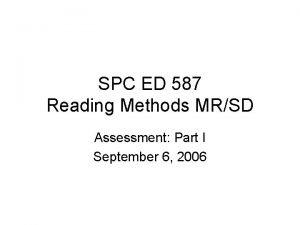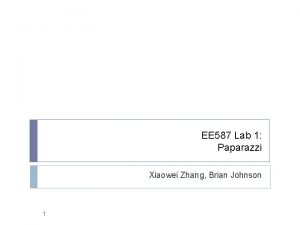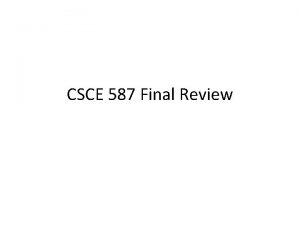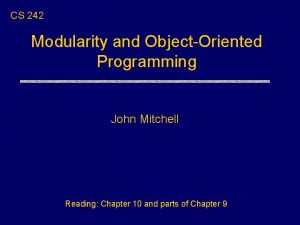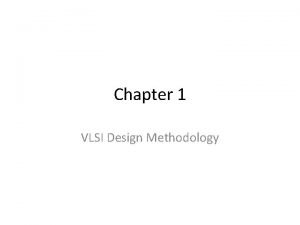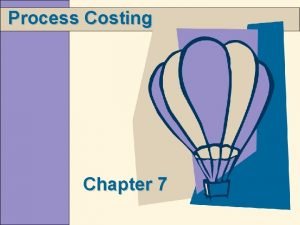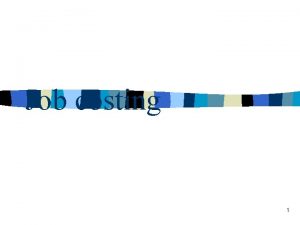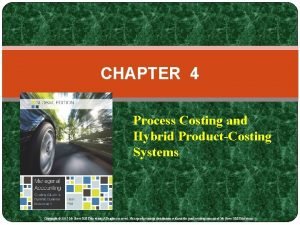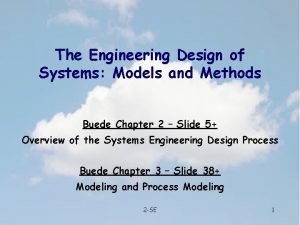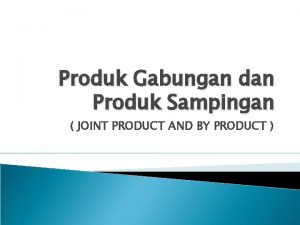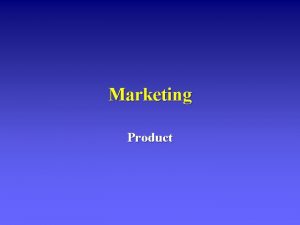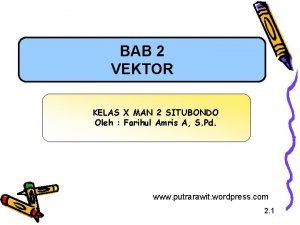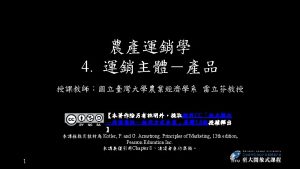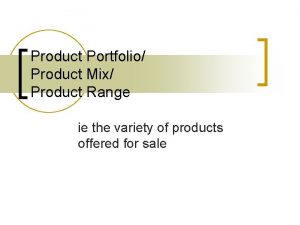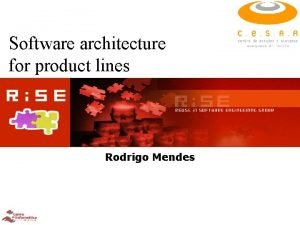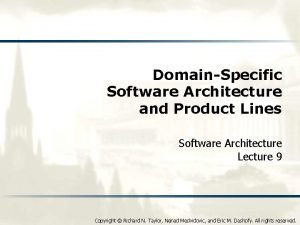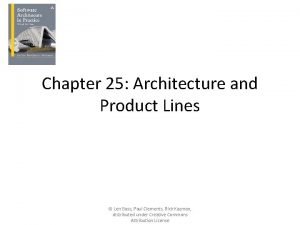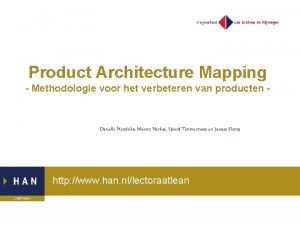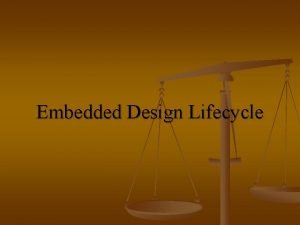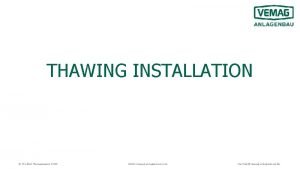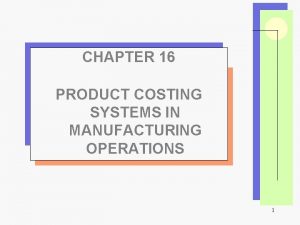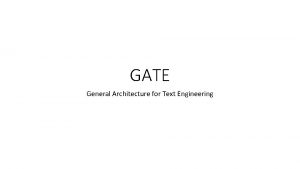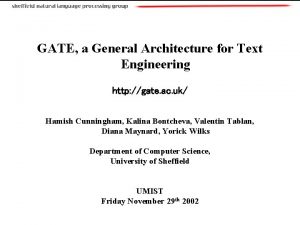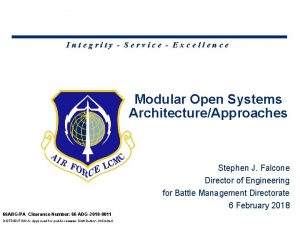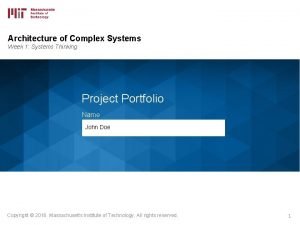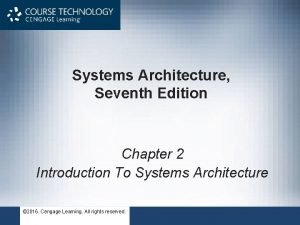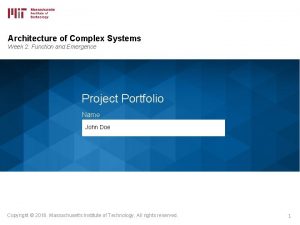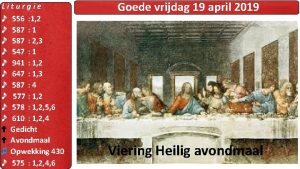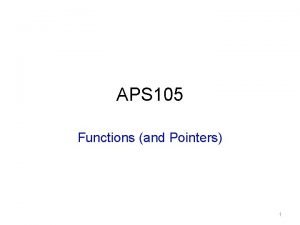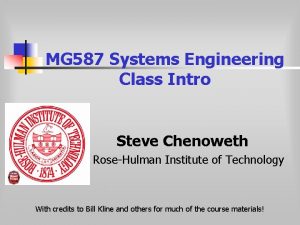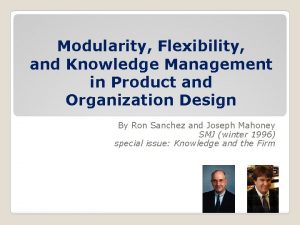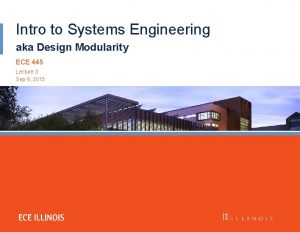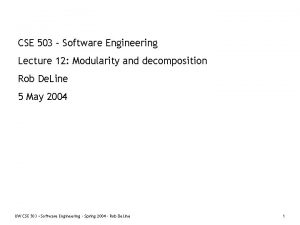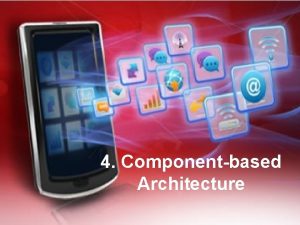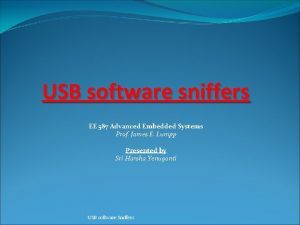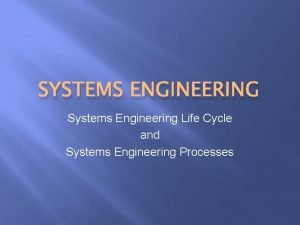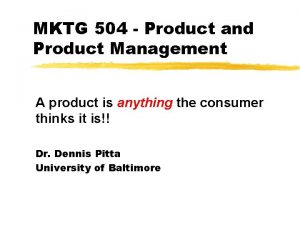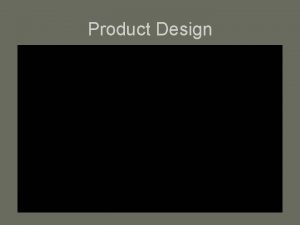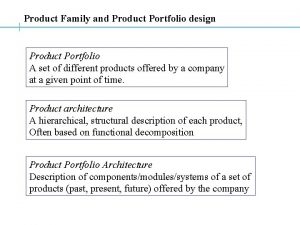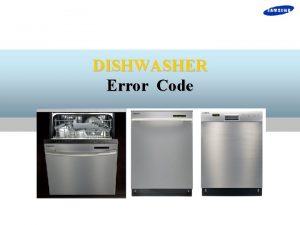Product Architecture and Modularity Systems Engineering MG 587

























































- Slides: 57

Product Architecture and Modularity Systems Engineering MG 587 Karl T. Ulrich and Steven D. Eppinger 3 rd Edition, Irwin Mc. Graw-Hill, 2004.

Product Architecture: Definition The arrangement of functional elements into physical chunks which become the building blocks for the product or family of products. module Product module

Other terms for “Chunks” • A ‘Chunk’ is made up of a collection of components that carry out various functions/sub-functions of the product. • Other terms for “Chunks” or elements that make up a chunk – – Subsystem Cluster Module Building blocks • ‘Interfaces’ connect these chunks together.

Architecture • The Architecture of a product is the scheme by which the functional elements of the product are arranged into physical chunks and by which the chunks interact.

Product Development Process Planning Concept Development System-Level Design Platform decision Concept decision Decomposition decision Detail Design Testing and Refinement Production Ramp-Up Product architecture is determined early in the development process. This is not a linear, sequential process.

Architecture Decisions

Choosing the Product Architecture decisions relate to product planning and concept development decisions: – Product Change (copier toner, camera lenses) – Product Variety (computers, automobiles) – Standardization (motors, bearings, fasteners) – Performance (racing bikes, fighter planes) – Manufacturing Cost (disk drives, razors) – Project Management (team capacity, skills)

How Does Architecture Happen? • Ulrich and Eppinger – ‘Chunks’ approach. • MIT – Design Structure Matrix. • Buede – Decomposition, – Physical mirrors Functional structures. • Dominant Flow Heuristics - R. B. Stone

Architectures: Challenge X

Modular or Integral Architecture? Apple i. Book Motorola Star. TAC Cellular Phone Ford Explorer Rollerblade In-Line Skates

Modular Product Architectures • Chunks implement one or a few functions entirely. • Interactions between chunks are well defined. • Modular architecture has advantages in simplicity and reusability for a product family or platform. Swiss Army Knife Sony Walkman

Trailer Example: Modular Architecture box protect cargo from weather hitch connect to vehicle fairing minimize air drag bed support cargo loads springs suspend trailer structure wheels transfer loads to road

Trailer Example: Integral Architecture upper half protect cargo from weather lower half connect to vehicle nose piece minimize air drag cargo hanging straps support cargo loads spring slot covers suspend trailer structure wheels transfer loads to road

Integral Product Architectures • Functional elements are implemented by multiple chunks, or a chunk may implement many functions. • Interactions between chunks are poorly defined. • Integral architecture generally increases performance and reduces costs for any specific product model. Compact Camera

Ford Taurus Integrated Control Panel

Discussion Question • Is one type of product architecture (modular vs. integral) better than the other? – – – Performance Platforms Serviceability Interfaces Cost to manufacture Cost to develop

Steps to Establish the Product Architecture – Ulrich and Eppinger 1. Create a functional model or schematic of the product. 2. Cluster the elements on the schematic. 3. Make Geometric Layouts to achieve the types of product variety. 4. Identify Interactions – – Fundamental (must interact) Incidental

Step 1: Functional or Schematic Diagram • • • Physical and/or Functional Connect Elements Which Have Fundamental Interactions Show “Motion” & “Flow” Example: Rapid Prototyping Machine using laser sintering

Step 2: Cluster Elements into Chunks Laser Table • Reasons to Cluster – – close geometric relationship function sharing modular desire to outsource Atmospheric Control Unit Powder Engine Control Cabinet

Step 3: Produce Geometric Layout Note: If you can’t make a geometrical layout then go back and redefine chunks and identify interactions

Step 4: Identify Interactions • Forces consideration of geometric interfaces to accommodate flows • Illustrates possible problems caused by interactions – Fundamental • Lines on the schematic that connect chunks • Usually a well understood property – Incidental • Usually not shown on schematic • Higher order effects/interferences

Product Architecture Example: Hewlett-Packard Desk. Jet Printer Part of a portfolio architecture and is composed of parts within a product architecture

Desk. Jet Printer Schematic Enclose Printer Print Cartridge Provide Structural Support Functional or Physical Elements Position Cartridge In X-Axis Store Output Position Paper In Y-Axis Store Blank Paper “Pick” Paper Flow of forces or energy Flow of material Flow of signals or data Accept User Inputs Display Status Control Printer Supply DC Power Communicate with Host Connect to Host Command Printer

Cluster Elements into Chunks Enclosure Enclose Printer Provide Structural Support Chassis Functional or Physical Elements Print Cartridge Position Cartridge In X-Axis Store Output Position Paper In Y-Axis Store Blank Paper “Pick” Paper Tray Print Mechanism Chunks User Interface Board Accept Display User Status Inputs Control Printer Communicate with Host Connect to Host Logic Board Power Cord and “Brick” Supply DC Power Command Printer Host Driver Software

Geometric Layout

Incidental Interactions User Interface Board Enclosure Styling Paper Tray Vibration Thermal Distortion Chassis Print Mechanism RF Shielding Thermal Distortion Logic Board RF Interference Power Cord and “Brick” Host Driver Software

Dominant Flow Heuristics • Heuristic 1: “The set of sub-functions through which a flow passes, from entry or initiation of the flow in the system to exit from the system or conversion of the flow within the system, define a module. ” le k o W e Th p m a Ex Energy Material Informa tion Function System

Generic Dominant Flow Illustration Material Interface Energy Interaction

Dominant Flow Example • Fragment of the iced tea brewer FM

Branching Flow • Heuristic 2: “Parallel function chains associated with a flow that branches constitute modules. Each of the modules interfaces with the remainder of the product through the flow at the branch. ”

Generic Branching Flow Illustration Branch Module/Chunk #1 Material Interface Module/Chunk #2

Branching Flow Example • Fragment of the iced tea brewer FM

Conversion-Transmission Modules • Heuristic 3: A conversion sub-function or a conversion-transmission pair or proper chain of sub-functions constitutes a module.

Conversion-Transmission Example • Fragment of the iced tea brewer FM

The Design Structure Matrix (DSM): An Information Exchange Method Interpretation: • Task D requires information from tasks E, F, and L. • Task B transfers information to tasks C, F, G, J, and K. Note: • Information flows are easier to capture than work flows. • Inputs are easier to capture than outputs. Donald V. Steward, Aug. IEEE Trans. on Eng. Mgmt. 1981

DSM (Partitioned, or Sequenced) Clustering Algorithms Note: Manipulate the matrix to emphasize features of the process flow. Sequential, parallel and coupled tasks can be identified.

System Team Assignment Based on Product Architecture From “Innovation at the Speed of Information”, S. Eppinger, HBR, January 2001.

Modularity • Modularity is a product development strategy in which interfaces shared among components in a given product architecture become specified and standardized to allow for greater substitutability of components across product families.

Types of Modular Designs • Slot • Bus • Sectional • All retain a 1 -to-1 mapping of functional to physical elements

Modular vs. Integral • Modular • Integral

Example of Modularity K. Ulrich, “The Role of Product Architecture in the Manufacturing Firm” Research Policy, 24, 419 -440 (1995)

Example of Modularity K. Ulrich, “The Role of Product Architecture in the Manufacturing Firm” Research Policy, 24, 419 -440 (1995)

Example of Modularity K. Ulrich, “The Role of Product Architecture in the Manufacturing Firm” Research Policy, 24, 419 -440 (1995)

Sony Walkman

Product Model Lifetime Fract ion Surv iv ing Sony AIWA Toshiba Panasonic Average Life 1. 0 Ot hers Sony 1. 18 yr 1. 97 yr 0. 8 About 200 versions of the Sony Walkman from four platforms! 0. 6 0. 4 0. 2 0 0 1 From Sanderson and Uzumeri, The Innovation Imperative, Irwin 1997. 2 3 4 5 Survival Time (years)

Platforms and Modularity

Some Modularity Benefits • Production of a great variety of end products from a limited number of building blocks • Platform strategy permitting many product variants based on a stable architecture • Facilitate changes to current and future products • Simplifies parallel testing • Serviceability • Allows for parallel development of design teams • Allows for outsourcing

Some Limitations to Modularity • Cannot discriminate look alike products • Increases the risk of competitors copying designs • Generally increases unit cost ( more components), volume (size) or weight of the product • More interfaces are less reliable (why? ? ) • Depends on the capabilities of designers

Impact of Modularity Decisions on Later Design Processes

Product Architecture Example: Hewlett-Packard Desk. Jet Printer

Planning a Modular Product Line: Commonality Table Differentiation versus Commonality Trade off product variety and production complexity

Planning a Modular Product Line: Differentiation Table Differentiation versus Commonality Trade off product variety and production complexity

Supply Chain Issues of Postponing Differentiation

Examples of Postponing Differentiation • Paint in Hardware Store • Cake in Grocery Store • Your experiences….

Product Configurators • Satisfy customer demand by creating a product composed of a number of predefined components • Select and arrange parts to fit product and operational constraints • Requirements: – Modularization – Custom assembly operations – Up-front engineering and testing

Fundamental Decisions • • • Integral vs. modular architecture? What type of modularity? What type of interfaces? How to assign functions to chunks? How to assign chunks to teams? Which chunks to outsource?

Product Architecture: Conclusions • Architecture choices define the sub-systems and modules of the product platform or family. • Architecture determines: – ease of production variety – feasibility of customer modification – system-level production costs • Key Concepts: – modular vs. integral architecture – clustering into chunks – planning product families
 ( 299 587 114 0 0 ) | ( 299 587 114 0 )
( 299 587 114 0 0 ) | ( 299 587 114 0 ) Engineering elegant systems: theory of systems engineering
Engineering elegant systems: theory of systems engineering Engineering elegant systems: theory of systems engineering
Engineering elegant systems: theory of systems engineering Spc 587
Spc 587 Dlee-587
Dlee-587 Csce 587
Csce 587 Modularity and community structure in networks
Modularity and community structure in networks Consequences of bugs in stm
Consequences of bugs in stm Modularity oop
Modularity oop In which method regularity is used to reduce complexity
In which method regularity is used to reduce complexity New product development and product life cycle strategies
New product development and product life cycle strategies Relationship between total average and marginal product
Relationship between total average and marginal product Product line and product mix
Product line and product mix First screen feasibility analysis example
First screen feasibility analysis example Gnp at gdp
Gnp at gdp Process costing and hybrid product-costing systems
Process costing and hybrid product-costing systems Wip control account
Wip control account Hybrid costing system examples
Hybrid costing system examples Product costing
Product costing Data centered architecture
Data centered architecture Roman civilization vocabulary
Roman civilization vocabulary Data-centered architecture
Data-centered architecture Forward engineering in software engineering
Forward engineering in software engineering Engineering systems and computing
Engineering systems and computing The engineering design of systems: models and methods
The engineering design of systems: models and methods Decision support systems and intelligent systems
Decision support systems and intelligent systems Produk gabungan
Produk gabungan Mkt 600
Mkt 600 Dot vs cross product
Dot vs cross product Product overview definition
Product overview definition Perkalian cross vektor i j
Perkalian cross vektor i j Actual product adalah
Actual product adalah Product range vs product mix
Product range vs product mix Dot vektor
Dot vektor Product line architecture example
Product line architecture example Integral architecture example
Integral architecture example Product architecture steps
Product architecture steps Software architecture
Software architecture Product line architecture example
Product line architecture example Productarchitectuur
Productarchitectuur Difference between generic software and custom software
Difference between generic software and custom software Embedded design life cycle
Embedded design life cycle The two basic types of product costing systems are
The two basic types of product costing systems are What is edlc
What is edlc Product management systems
Product management systems Costing systems
Costing systems Architecture business life cycle
Architecture business life cycle Bus design in computer architecture
Bus design in computer architecture General architecture for text engineering
General architecture for text engineering Repository architecture style
Repository architecture style General architecture for text engineering
General architecture for text engineering General architecture for text engineering
General architecture for text engineering Modular open systems architecture
Modular open systems architecture Complex system architecture
Complex system architecture 500-651 exam dumps
500-651 exam dumps Types of system architecture
Types of system architecture What is operating system architecture
What is operating system architecture Architecture of complex systems
Architecture of complex systems



